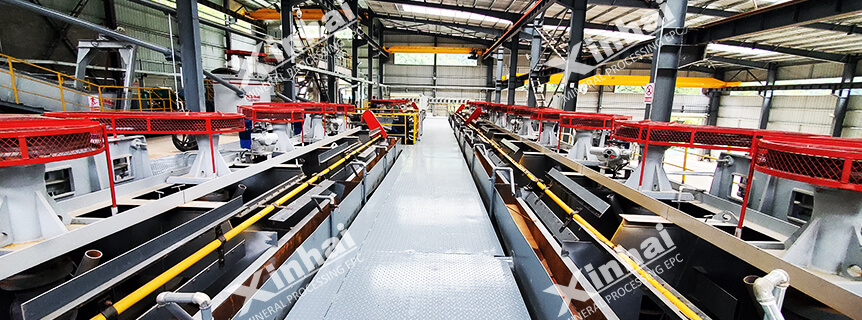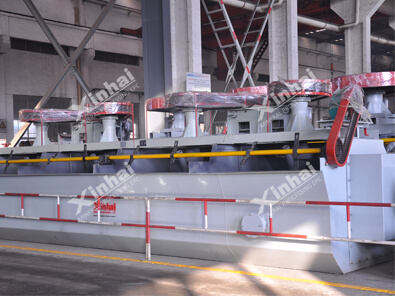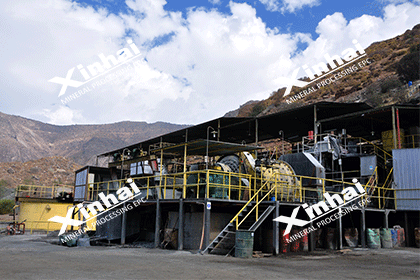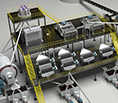Key Techniques and Methods for Enhancing Copper Flotation Efficiency
 Shirley
Shirley
 Jul 10, 2024
Jul 10, 2024
 1538
1538
If you want to know more details about equipment, solutions, etc, please click the button below for free consultation, or leave your requirements!

Copper flotation is an essential part of the copper ore dressing process, and its efficiency directly affects the quality and recovery rate of copper concentrate. This article will provide a detailed introduction to the key techniques and methods for improving the efficiency of copper flotation, assisting mining enterprises in achieving better economic benefits in actual production.
01Overview of Copper Flotation Process
BackThe copper flotation process is a method that separates copper minerals from gangue minerals by utilizing the differences in the physicochemical properties on the mineral surfaces. Based on the physical and chemical properties of different minerals in copper ore, Xinhai Mining Machinery adopts one or several combined ore dressing processes to separate useful minerals from gangue minerals and to separate various coexisting useful minerals as much as possible from each other, remove or reduce harmful impurities, in order to obtain copper concentrate required for smelting or other industries.
02Single Sulfide Copper Flotation Process
BackThe mineral composition of single sulfide copper ore is relatively simple, mainly including chalcopyrite, bornite, chalcocite, covellite, and a small amount of oxidized copper minerals. Due to the significant difference in floatability between copper minerals and gangue minerals, flotation methods are commonly used for separation. The common single sulfide copper flotation process flow includes a single-stage grinding-flotation process flow and a single-stage grinding-flotation-scavenger re-grinding process flow.
1. Single-stage Grinding-Flotation Process Flow
This process flow is suitable for processing ores where copper minerals are coarsely and evenly disseminated and the binding between copper minerals and gangue is relatively loose. Typically, the ore is ground to -200 mesh accounting for 50-60%, allowing copper minerals to be essentially liberated as individual particles. After roughing and scavenging, one to three times of cleaning can achieve good flotation indicators. This flotation process flow is simple and has a low cost for ore dressing.
2. Single-stage Grinding-Flotation-Scavenger Re-grinding Process Flow
This process flow is more suitable for processing single sulfide ores of porphyry copper or copper-molybdenum ores. According to the characteristics of copper mineral dissemination, the ore is ground to -200 mesh accounting for 50-70% after a single-stage grinding, and a large amount of tailings are discarded after roughing and scavenging. After re-grinding the rough concentrate, two to three times of cleaning can yield copper concentrate. This process flow allows copper ore dressing plants to achieve good economic benefits when the ore grade is low and the processing volume is large.

03Polymetallic Sulfide Copper Flotation Process
BackPolymetallic sulfide copper ores not only contain a variety of copper minerals but are also commonly associated with pyrite, galena, sphalerite, and other minerals, making the mineral composition, structure, and texture more complex. Based on the characteristics of the above ores, the polymetallic sulfide copper mineral flotation process flow mainly includes the following types:
1. Stepwise Priority Flotation Process Flow
Stepwise priority flotation is suitable for more complex sulfide copper ores, with a variety of copper minerals, mainly azurite and enargite. Since the flotation speeds of various copper minerals are different, it is possible to first rough out the easily floatable copper minerals, and then re-grind and re-select the difficult-to-float copper minerals, combining the recovery of copper concentrate to ensure the grade and recovery rate.
2. Isomorphic Flotation Process Flow
This process flow is based on the flotation speed of copper minerals and other metal minerals such as lead and zinc for separation. The minerals with fast and slow flotation speeds are separately floated, which can eliminate the impact of residual flotation reagents on flotation separation, reduce the amount of reagents used, but the process flow is more complex, takes longer, and requires more grinding equipment.

04Oxidized Copper Sulfide Flotation Process
BackThere are mainly two methods for the sulfide flotation of oxidized copper ores: conventional sulfidation flotation and hydrothermal sulfidation flotation. Conventional sulfidation flotation is achieved by adding sulfidizing agents to sulfide the surface of oxidized copper minerals, forming sulfide copper minerals, and then proceeding with flotation. Hydrothermal sulfidation flotation, on the other hand, carries out the sulfidation reaction under high temperature and high pressure conditions to improve the sulfidation effect and thus enhance the flotation efficiency.
05Other Methods to Improve Flotation Efficiency
Back1. Control of Grinding Fineness
The fineness of grinding is one of the key factors affecting flotation indicators. Appropriate grinding fineness can fully liberate copper minerals from gangue minerals, improving flotation efficiency. Generally, in the single sulfide copper flotation process, grinding the ore to -200 mesh accounting for 50-70% can achieve good flotation effects.
2. Selection and Control of Reagent Dosage
The selection and dosage of flotation reagents have a significant impact on flotation effects. Reasonable selection of collectors, frothers, and modifiers, and controlling their dosage can improve the flotation recovery rate and concentrate grade of copper minerals.
3. Optimization of Flotation Equipment
The performance of flotation equipment directly affects flotation effects. Choosing efficient and energy-saving flotation equipment and regularly maintaining and optimizing the equipment can improve flotation efficiency and reduce the cost of ore dressing. Click to know the cost of building a copper processing plant.

06Conclusion
BackImproving the efficiency of copper flotation is an important issue in the copper ore dressing process. By reasonably selecting flotation processes, controlling grinding fineness, optimizing the dosage of reagents, and the performance of equipment, the recovery rate and concentrate grade of copper flotation can be significantly improved.
 +86 183 3575 8886
+86 183 3575 8886 pinklaurabao@gmail.com
pinklaurabao@gmail.com




 Message
Message Chat Now
Chat Now




















